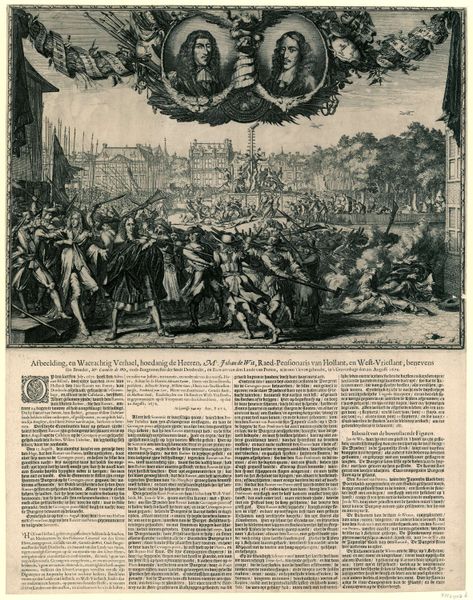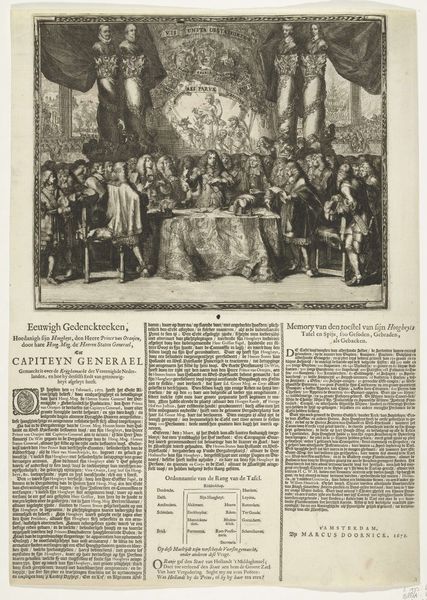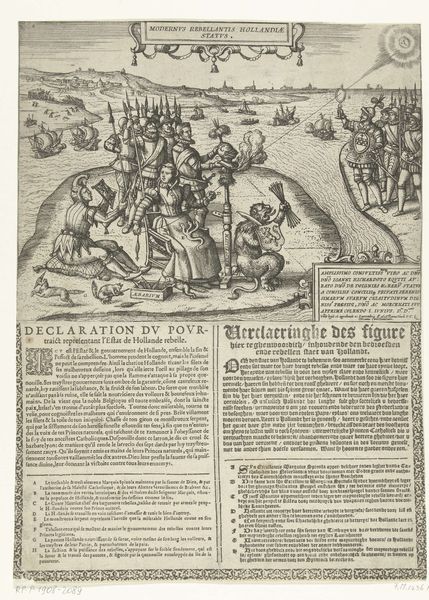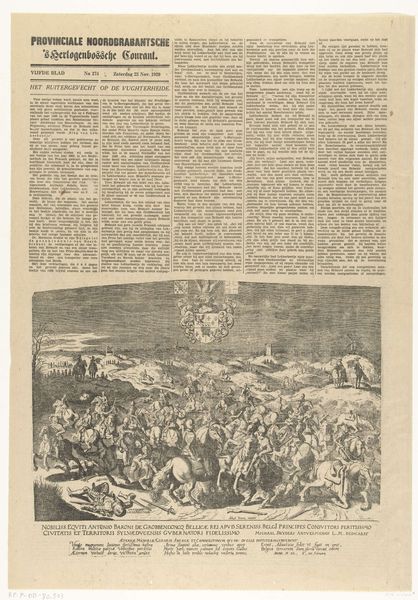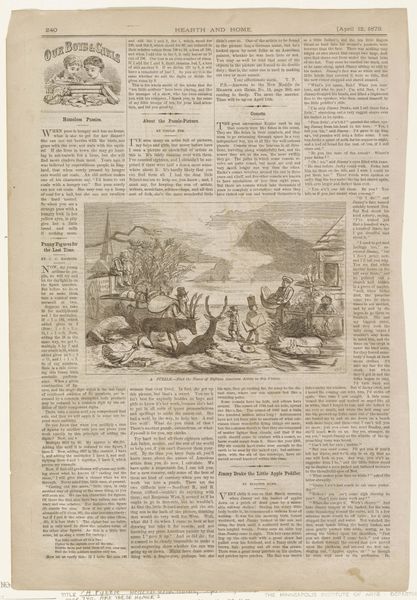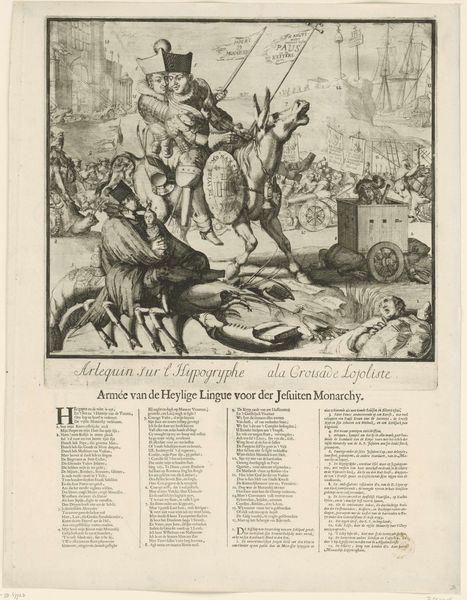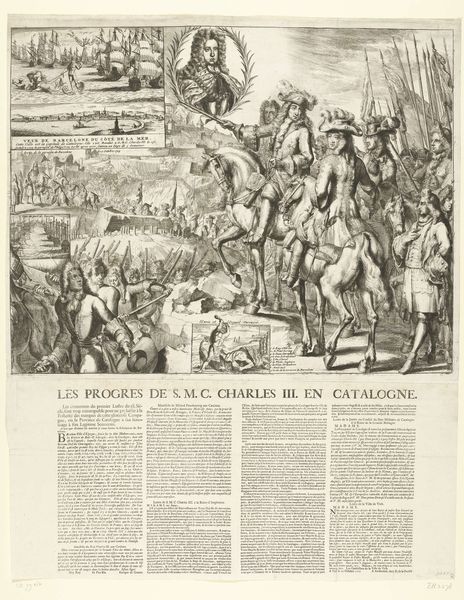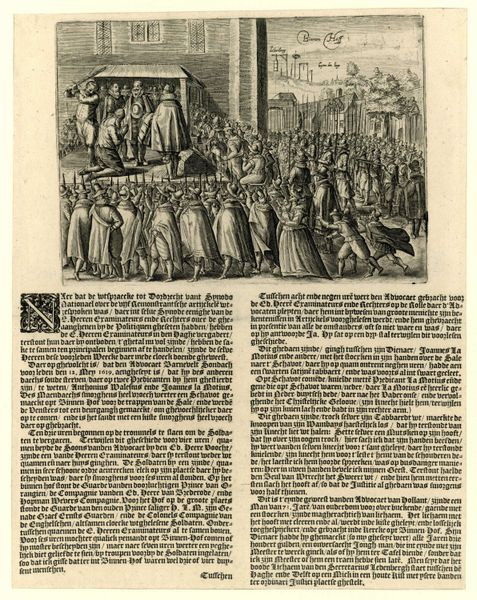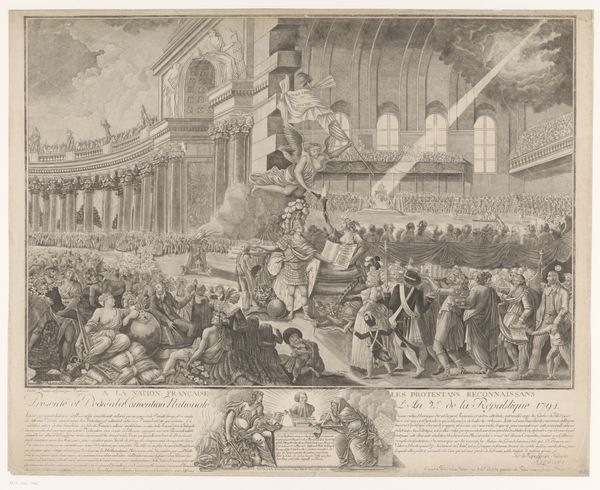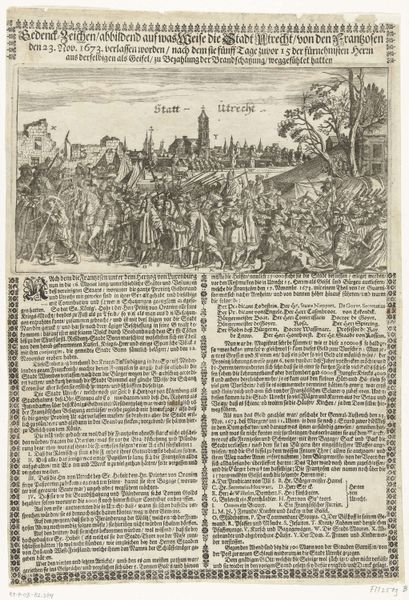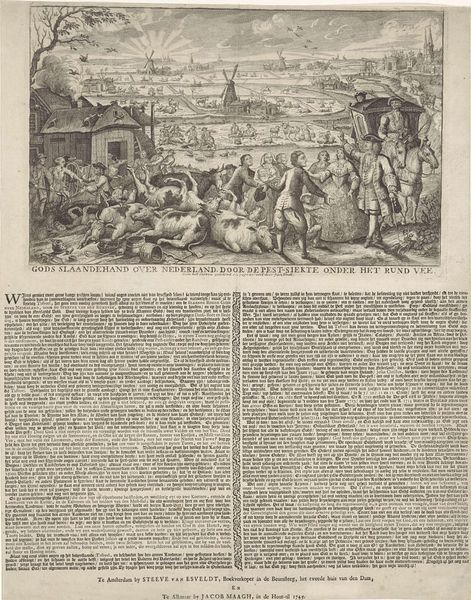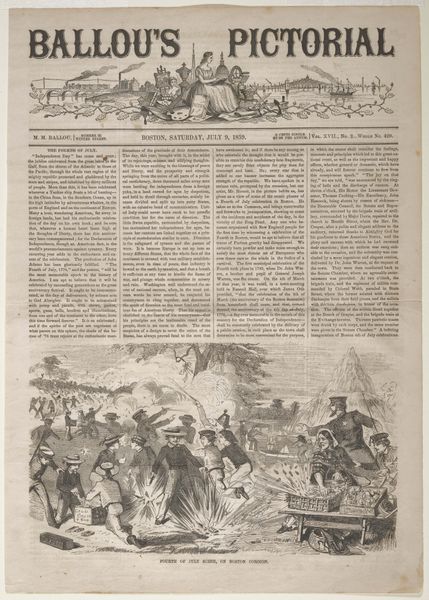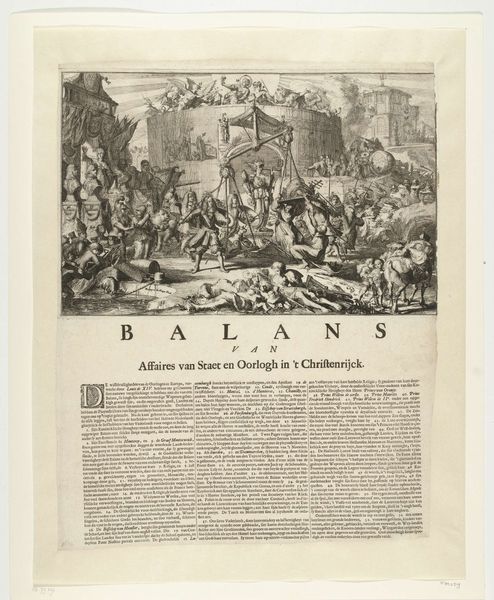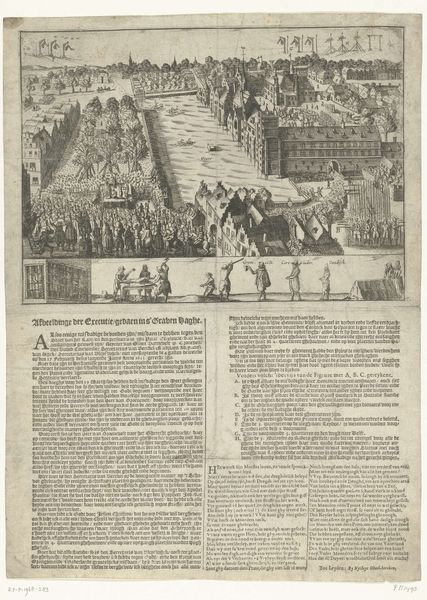
Afbeelding en waarachtigh Verhaal... (Representation of the True Story of Johan de Witt...) 1672
0:00
0:00
print, engraving
#
narrative-art
#
dutch-golden-age
# print
#
cityscape
#
history-painting
#
engraving
Dimensions: plate: 32.4 x 43.1 cm (12 3/4 x 16 15/16 in.) sheet: 53.9 x 43.1 cm (21 1/4 x 16 15/16 in.)
Copyright: National Gallery of Art: CC0 1.0
Editor: Here we have "Representation of the True Story of Johan de Witt..." an engraving by Romeyn de Hooghe, created in 1672. The scene feels incredibly chaotic and violent. What can you tell me about the socio-political context surrounding this piece? Curator: It's definitely not a simple artwork. De Hooghe created this engraving in the Dutch Golden Age during a period known as the Rampjaar, or disaster year. It depicts the gruesome murder of Johan de Witt, the Grand Pensionary of Holland, and his brother Cornelis, by an angry mob in The Hague. The event signified a turning point in Dutch history. Editor: A disaster year…that certainly fits with the violent imagery. Why would De Hooghe depict such a brutal scene? What purpose did it serve? Curator: De Hooghe's motivations are complex and likely tied to the prevailing political climate. Consider who commissioned and consumed prints like this. They served as a form of propaganda, reinforcing the shift in power towards the House of Orange, which replaced the de Witt brothers' republican regime. The print plays into pre-existing anxieties and hostilities among the populace. The violence here isn't just a depiction, it is a public shaming of those who were deemed enemies of the state, shaping public opinion and cementing the legitimacy of the new political order. Editor: So, the print wasn't simply recording history, it was actively participating in it? It feels unsettling to see history used like this. Curator: Exactly. Think about the impact of this imagery being widely circulated and displayed. These images contribute to collective memory and historical narratives. Are there ways that you see contemporary art being used in a similar fashion today? Editor: I suppose political cartoons could be considered a similar type of visual commentary. This makes me think more about who has the power to control these narratives and whose stories get told, doesn’t it? Thank you for this interesting perspective! Curator: And thank you. This reminds us that art is never truly neutral; it's a reflection of its time and the forces at play within society.
Comments
No comments
Be the first to comment and join the conversation on the ultimate creative platform.
